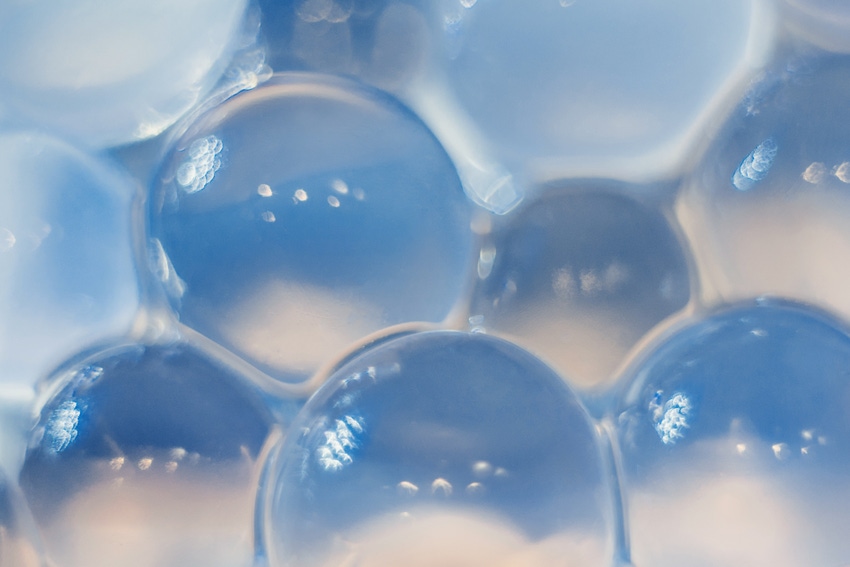Biomaterial Mimics Human Tissue, Fights Bacteria
A novel hydrogel is bioactive, antimicrobial, and self-healing, suiting it for medical applications and 3D bioprinting.
November 27, 2023

At a Glance
- Natural hydrogels typically require harvesting from animals
- Researcher devised a synthetic hydrogel after being inspired by peptides that promote self-assembly
- Material will be studied for its potential in tissue culture, 3D bioprinting, and stem-cell delivery
Researchers have created a new synthetic material that behaves like natural human tissue, paving the way for innovations in bioprinting and how synthetic materials are used in medicine.
Scientists at the University of New South Wales (UNSW) Sydney developed the material—dubbed Trpzip—which is a hydrogel that is both bioactive—which means that encapsulated cells behave as if they are living in natural tissue—and antimicrobial, which means it prevents bacterial infections.
“This combination lands it in the sweet spot for materials that might be useful in medicine," observed one of the researchers and Associate Professor Kris Kilian from UNSW’s School of Materials Science & Engineering and School of Chemistry.
The material is also self-healing, which means that it will form back into its original shape after being squished, fractured, or being expelled from a syringe. This property makes it a suitable candidate for use in 3D bioprinting or for biomaterials that can be injected into the human body in medical applications, Kilian said.
Hydrogels already are used in numerous applications—including food, cosmetics, contact lenses, and even in medical research to seal wounds and replace damaged tissue. But so far it's been difficult to develop one that mimics the true properties of human tissue, limiting their application.
Surprise Hydrogel Discovery
The Trpzip material came out of a rather surprising discovery made by Ashley Nguyen, a PhD student in the UNSW School of Chemistry, while she was working at home during the COVID-19 pandemic.
Nguyen was using computer simulations to look for molecules that self-assemble, or arrange themselves without human intervention, when she came upon the concept of "tryptophan zippers," or "Trpzip." Trpzip materials are short chains of amino acids with multiple tryptophans that act as a zipper to promote self-assembly, and the sequence of peptides appeared to form a new hydrogel.
Upon returning to the lab, Nguyen “synthesized the top candidate and was thrilled to see it actually form a gel," she said. In addition to its myriad applications, the material also has potential to be an ethical alternative to the widely used natural materials that are currently derived from animals, Nguyen said.
“Natural hydrogels are used all over in society—from food processing to cosmetics—but require harvest from animals, which poses ethical concerns,” she said.
This bodes well especially in medicine, where using animal-derived products in the body can cause negative and sometimes grave immune response. In fact, it could even outperform them in some cases, such as clinical research, Nguyen said.
Testing for Efficacy
The team collaborated with Professor Shafagh Waters in the School of Biomedical Sciences at UNSW Sydney to prove Trpzip's viability for biological research. In her work, Waters uses a different hydrogel harvested from mouse tumors called Matrigel for the culture of patient tissue.
“Matrigel has some disadvantages in research use because every batch is different," she explained. "A chemically defined alternative could be cheaper and more uniform, which would prove highly beneficial to biomedical research."
The researchers published a paper on their work in the journal Nature Communications. The next phase of research will involve partnering with industry and clinical scientists to assess the use of Trpzip gels in tissue culture, as well as explore utility for other applications in 3D bioprinting and stem-cell delivery.
“We think that Trpzip hydrogels and materials like it will provide a more uniform and cost-effective alternative to animal-derived products," Kilian said. "It would be a tremendous outcome if our material reduced the number of animals used in scientific research.”
About the Author(s)
You May Also Like



